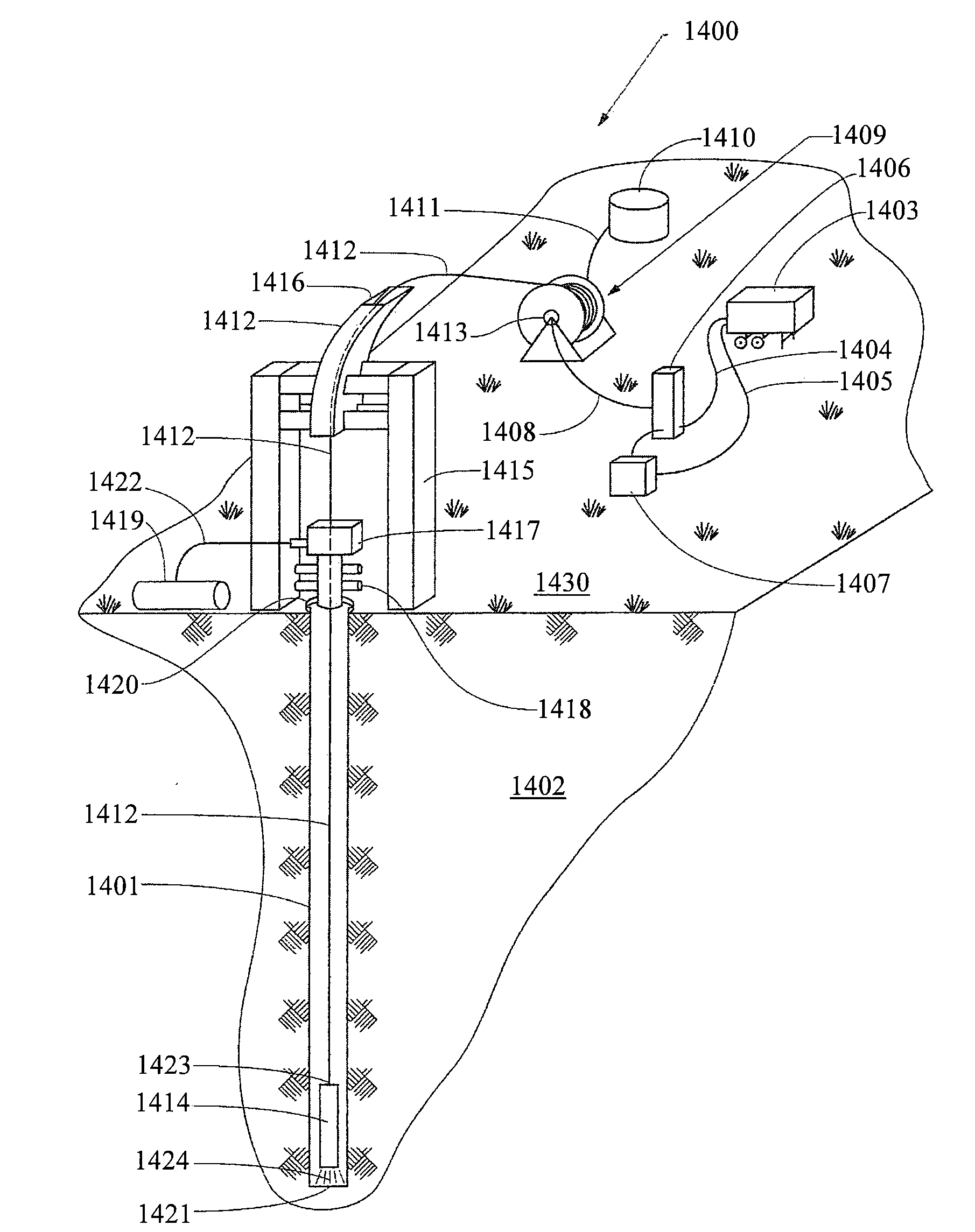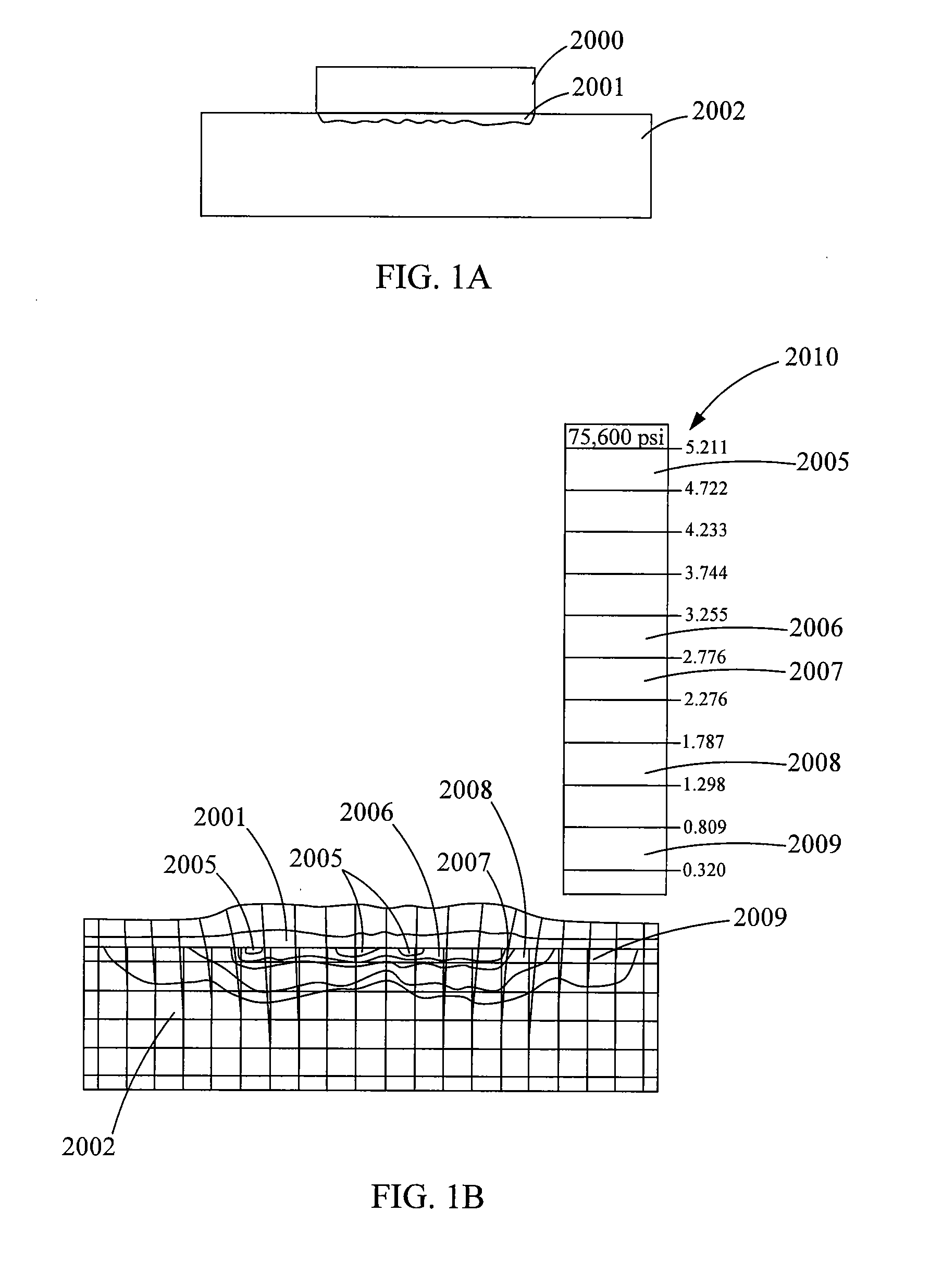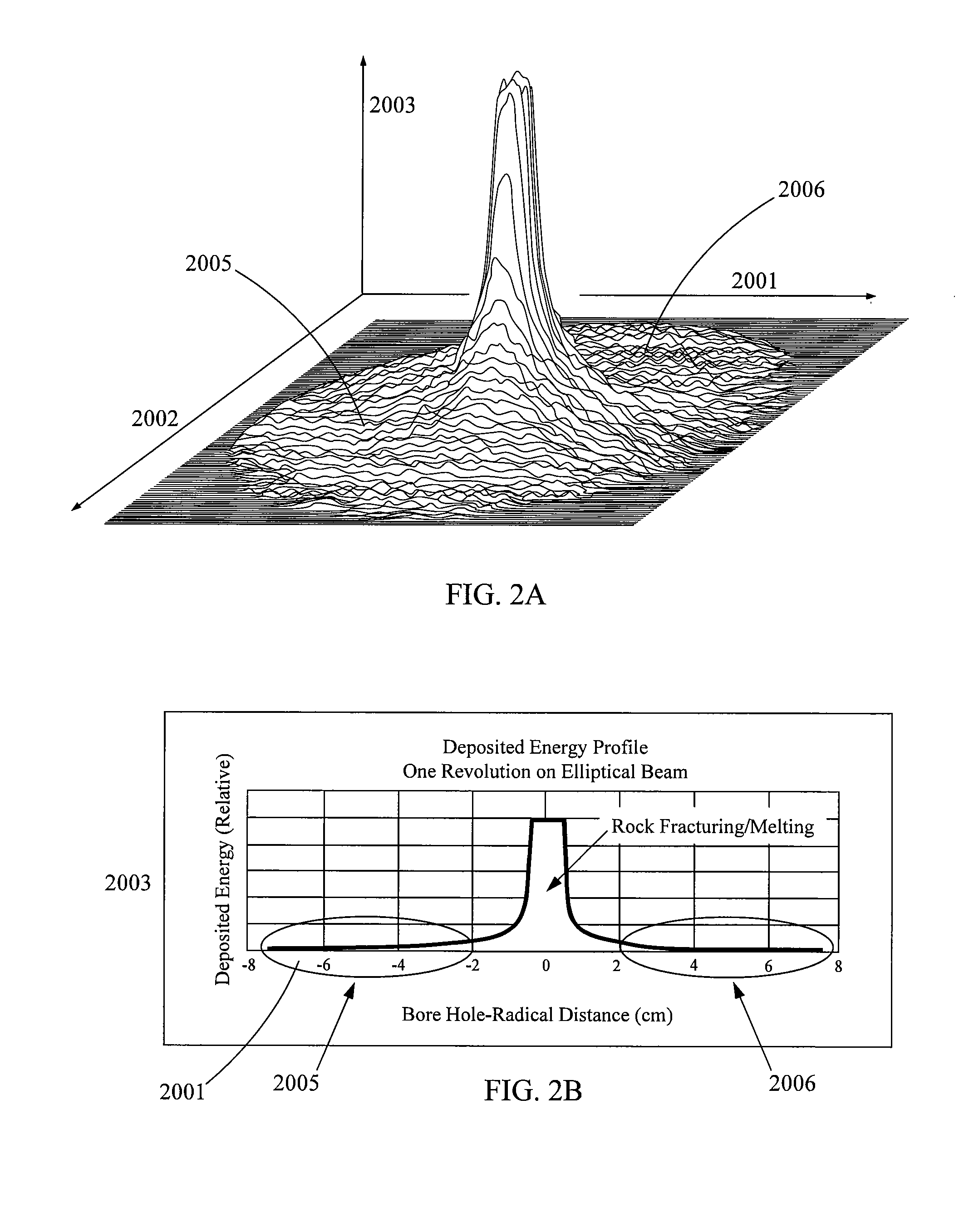Methods and apparatus for delivering high power laser energy to a surface
a laser energy and surface technology, applied in the direction of drilling machines and methods, drill bits, borehole/well accessories, etc., can solve the problems of no one developing parameters, etc., and achieve the effect of high-power laser energy and cost-effectiveness
- Summary
- Abstract
- Description
- Claims
- Application Information
AI Technical Summary
Benefits of technology
Problems solved by technology
Method used
Image
Examples
example 2
[0058 is illustrated in FIG. 5 and has an optical assembly 5020 for providing the desired beam intensity profile of FIG. 3A and energy deposition of FIG. 3B to a borehole surface from a laser beam having a uniform distribution. Thus, there is provided in Example 2 a laser beam 5005 having a uniform profile and rays 5007, that enters a spherical lens 5013, which collimates the output of the laser from the downhole end of the fiber, the beam then exits 5013 and enters a toroidal lens 5015, which has power in the x-axis to form the minor-axis of the elliptical beam. The beam then exits 5015 and enters a pair of aspherical toroidal lens 5017, which has power in the y-axis to map the y-axis intensity profiles form the pupil plane to the image plane. The beam then exits the lens 5017 and enters flat window 5019, which protects the optics from the outside environment.
example 3
[0059 is illustrated in FIG. 6, which provides a further optical assembly for providing predetermined beam energy profiles. Thus, there is provided a laser beam 6005 having rays 6007, which enters collimating lens 6009, spot shape forming lens 6011, which is preferably an ellipse, and a micro optic array 6013. The micro optic array 6013 may be a micro-prism array, or a micro lens array. Further the micro optic array may be specifically designed to provide a predetermined energy deposition profile, such as the profile of FIG. 3.
example 4
[0060 is illustrated in FIG. 7, which provides an optical assembly for providing a predetermined beam pattern. Thus, there is provided a laser beam 7005, exiting the downhole end of fiber 7040, having rays 6007, which enters collimating lens 6009, a diffractive optic 7011, which could be a micro optic, or a corrective optic to a micro optic, that provides pattern 7020, which may but not necessary pass through reimaging lens 7013, which provides pattern 7021.
[0061]There is further provided shot patterns for illuminating a borehole surface with a plurality of spots in a multi-rotating pattern. Accordingly in FIG. 8 there is provided a first pair of spots 8003, 8005, which illuminate the bottom surface 8001 of the borehole. The first pair of spots rotate about a first axis of rotation 8002 in the direction of rotation shown by arrow 8004 (the opposite direction of rotation is also contemplated herein). There is provided a second pair of spots 8007, 8009, which illuminate the bottom sur...
PUM
 Login to View More
Login to View More Abstract
Description
Claims
Application Information
 Login to View More
Login to View More - R&D
- Intellectual Property
- Life Sciences
- Materials
- Tech Scout
- Unparalleled Data Quality
- Higher Quality Content
- 60% Fewer Hallucinations
Browse by: Latest US Patents, China's latest patents, Technical Efficacy Thesaurus, Application Domain, Technology Topic, Popular Technical Reports.
© 2025 PatSnap. All rights reserved.Legal|Privacy policy|Modern Slavery Act Transparency Statement|Sitemap|About US| Contact US: help@patsnap.com



